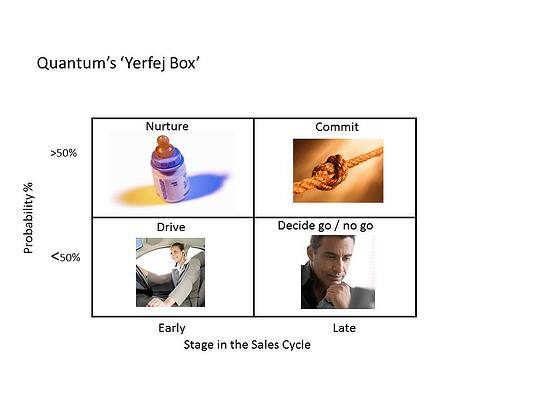
How accurate is your sales forecast? Do you know? Actually, let me clarify that: how many of the deals you predict actually come in? Many people fool themselves that if the revenue is within (say) 5% then that is a reasonably accurate forecast. But often, that is not the case.
Closer examination may expose that the actual forecast was, for example, 70% with the other 30% ‘flying in’ from unlisted opportunities.
Once you have assessed the true gap in the accuracy of your forecast you and your teams may wish to consider how to improve it. So, here are some ideas on how:
Forecasting methods
- Coverage: X pipeline at Y stage of the sales cycle = Z business in T time. Gap analysis can calculate how many new opportunities are needed to hit target
- Conversion ratios: X opportunities at each stage of the sales cycle will convert Z business in T time. Gap analysis of how many new opportunities are needed and / or what can be done to improve ongoing conversion rates
- Probability measurement: qualitative assessment of likelihood. X% range has historically delivered Y business in T time
The most robust sales forecasting regimens will include all three approaches. The first too methods are sound and reasonable provided that you have a good grip on sales activity management.
Focus on probability
In my view, the probability method is often misunderstood and under-utilised. Here are my thoughts on how this can be improved and some practical tools that can be applied to improve sales forecasting and provide a platform for sales coaching.
Firstly, let’s consider some common errors:
- Over-simplification of % probability left to the ‘gut feel’ of the salesperson
- The use of household name CRM systems that confuse ‘probability’ with the ‘stage in the sales cycle’ all on one continuum.
Example:
Unqualified lead: 0%
Qualified lead: 10%
Initial contact made: 20%
Discussions in progress: 40%
Proposal made: 65%
Verbal agreement: 80%
Order placed: 95%
Order accepted: 100%
The problem here is that we should not confuse the ‘probability’ with the ‘stage of the sale’. We might have a first meeting with a prospect who loves the proposition, has the budget, the authority to decide and with no competition. Probability is high but the sales process is early. Likewise, we could be at the proposal submitted stage where we are bidding against 5 bidders with a superior proposition and where we have not met the decision maker.
Taking this into account, I recommend a matrix approach using the ‘Yerfej Box’ tool:
 Depending on which quadrant we are in we can select from a best practice set of actions to make the right next move. Remember, the pipeline is already an outcome; we need to focus on future actions.
Depending on which quadrant we are in we can select from a best practice set of actions to make the right next move. Remember, the pipeline is already an outcome; we need to focus on future actions.
Using this method we can then focus on an empirical approach to assessing the probability. I advocate the use of Quantum’s ‘Win-Win’ tool: (Available as an iphone App: ‘iwinwin’)
A spreadsheet version is also available on application. Win-Win represents a series of questions (all can be tailored to your business) in the following categories:
M - Money
O - Our Solution
D - Decision
E - Enemy
R - Resource
N - Needs
In addition to providing the platform for a qualitative pipeline discussion, the tool adds substance to the disqualification of opportunities from the forecast until the 'Essential' questions are answered. Regardless of whether the response is positive or negative, answers to the 'Essential' questions are, well, essential!
Some examples are:
- Do we know whose budget it is?
- Are we talking to all of the decision-makers?
- Do we really understand the customer's needs and wants?
The tool also includes the ‘Q’ count.
This measures at any stage of the process how many questions you are able to honestly answer and how many are really ‘don’t knows’. A low Win-Win score could be because there are many ‘don’t knows’ as you are early in the sales process.This will help you to decide where you are in the process and whether to qualify the opportunity out or to continue to pursue it.
Vitally, it will also provide a platform for effective sales coaching which will have a fundamental effect on raising the game of your sales team.
What are your next steps?
More from Vistage:


